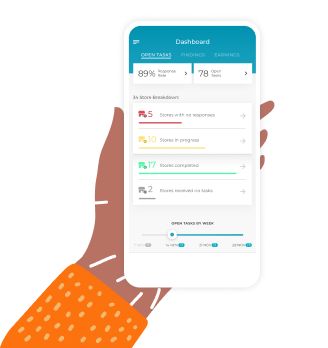There’s a lot of jargon swirling around the retail technology industry, and differentiating terms for the uninitiated can be more than a little confusing, especially when you’re deciding on a solution to keep your business competitive. In this short article, we’ll be focusing on the two most popular terms that refer to wildly different services–‘consumer demand patterns’ and ‘consumer purchasing patterns.’ Keep reading for an overview of these two terms, their practical applications, and the type of analysis you can expect from each.
Consumer Purchasing Patterns
First off, and most important in this distinction, ‘purchasing patterns’ implies that the products were already purchased. This term usually refers to business intelligence tools that focus on operational and market questions like:
- Which products were sold in which stores?
- What is the average sales level per store, product, or segment?
- Which stores sell exceptionally below or above the chain?
Solutions marketed under consumer purchasing patterns are incredibly valuable for understanding at the highest level how your stores are performing against relevant benchmarks; your estimated inventory level of specific items; the local purchasing behavior and more. Any retail company doing basic reporting, inventory management, and benchmarking past performance at a minimum uses this type of analysis.
Consumer Demand Patterns
Where software solutions concerning purchasing patterns analyze products that were already purchased, solutions concerning consumer demand patterns refer to an unmet demand that might be realized (purchased) partially but potentially exists in greater volume. These solutions really concern predictive analytics questions, like:
- Which product could theoretically sell well in which stores?
- What might the average sales per store, product, or segment look like if demand was fully realized?
- Which stores could sell exceptionally above the chain for which items?
A simple way to differentiate here is to think of consumer demand pattern solutions as forecasting models (rather than business intelligence dashboards)–with features like collaborative filtering (which potential products could fit the customer?), clustering (which stores are alike?), customer segmentation (which customers prefer which product?) and more.
Data Requirements & Analysis
It should be expected that since the underlying analysis between the two terms is drastically different, the data and analysis are different as well. Purchasing patterns rely on the actual existing POS (point of sale) data. This data is easy to provide, and since every business uses it to calculate profits, it’s often well structured, and it doesn’t require big data tools to analyze because it’s simple and straight-forward.
Demand patterns on the other hand rely not only on the actual POS data but can also be supplemented with “external” data like neighboring competition, weather conditions, customer demographics, store segmentations and more.
Here’s a quick example of what I mean: a product in your store was sold out last month, and it’s not clear how many more items could have been sold if the inventory on the shelves was higher–it could be two additional items or a thousand items more. Similarly, if the product in a store undersold, it isn’t obvious if the sales are actually the customer demand level in that store or if some external problems prevented the demand from reaching its full potential (such as wrong pricing, wrong display, a poor planogram, associates’ awareness, etc.)
Analysts might have to fill the missing data by making assumptions, for example, “the demand for a product that was entirely sold in a store would reach a certain sales level if there was no availability issue at that store,” or use external data like focus groups and customer surveys to infer that “these customers are likely to purchase this type of product if these products were available to them.”
While they are helpful for detecting demand patterns, these types of supplemental data are a triple threat. They’re expensive, assumptive, and less reliable than data gleaned from actual POS data.
This is where things can get a little complex for chains using demand pattern software–where does the data and analysis come from? Some chains using demand pattern software save a lot of time by investing in a technical backend, like a machine-learning software, to do this work for them. For example, CB4’s machine-learning algorithm supplements the POS data with unrealized demand patterns. These patterns are found by analyzing the data to find thousands of consumer demand patterns hidden in the data that would take a single analyst decades to discover.
In short, these types of algorithms find patterns like this: if customers in your store purchase items A, B, and C, then item D is likely to be purchased in a high quantity. This isn’t market basket analysis since these patterns are not necessarily related to the same transactions by the same customers–these are patterns that exist in your stores because of the above mentioned external factors, like nearby competition, a local school or office building, or a hundred other variables. The difference here is that we don’t concern ourselves with why these conditions exist: only that they do exist, and that each one represents an actual opportunity to increase your bottom line profits.
Finally, these solutions use the available, simple, and structured POS data while making less assumptions about unrealized demand. Thus, by using pattern recognition analysis over the entire chain, the retailer can analyze demand patterns along with the simpler purchasing patterns.

Figure: Although we do not have/need full information regarding the external or internal conditions that define the demand level per product, by analyzing the existing point of sales data, CB4’s software is able to follow the footprints these conditions leave in the sales data and detect the hidden demand patterns across stores.
To learn more about consumer demand patterns, CB4’s machine learning algorithm, or how our clients use these patterns to detect operational or merchandising inefficiencies, contact us.


